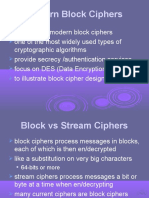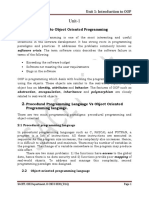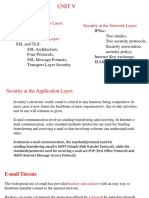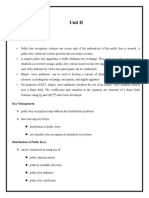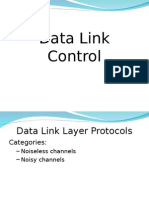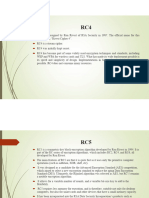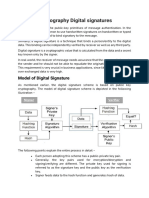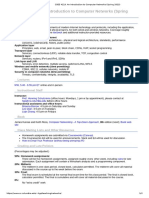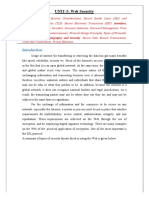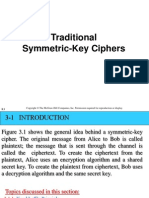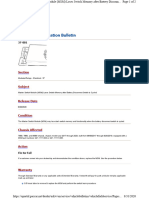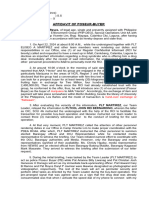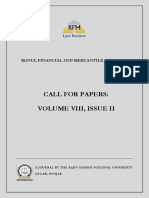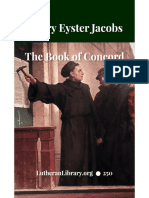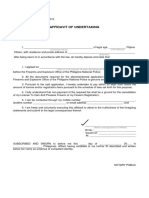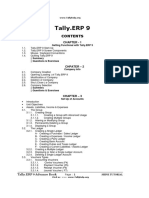0% found this document useful (0 votes)
205 views34 pagesLecture 8 - Security at The Application Layer
This document discusses security at the application layer for email using PGP and S/MIME. It begins by explaining the general structure of an email program and how PGP and S/MIME can provide security services like encryption, signatures, and authentication for email. It then goes into more detail on the key components of PGP, including key rings for storing public/private keys, how certificates are used, and how messages are formatted and packets are structured. The document also covers the components of S/MIME, including how it builds upon MIME to define new content types that integrate security services, and how it uses the Cryptographic Message Syntax to specify how functions like encryption and signatures are applied to content.
Uploaded by
monaabdelaziz963Copyright
© © All Rights Reserved
We take content rights seriously. If you suspect this is your content, claim it here.
Available Formats
Download as PDF, TXT or read online on Scribd
0% found this document useful (0 votes)
205 views34 pagesLecture 8 - Security at The Application Layer
This document discusses security at the application layer for email using PGP and S/MIME. It begins by explaining the general structure of an email program and how PGP and S/MIME can provide security services like encryption, signatures, and authentication for email. It then goes into more detail on the key components of PGP, including key rings for storing public/private keys, how certificates are used, and how messages are formatted and packets are structured. The document also covers the components of S/MIME, including how it builds upon MIME to define new content types that integrate security services, and how it uses the Cryptographic Message Syntax to specify how functions like encryption and signatures are applied to content.
Uploaded by
monaabdelaziz963Copyright
© © All Rights Reserved
We take content rights seriously. If you suspect this is your content, claim it here.
Available Formats
Download as PDF, TXT or read online on Scribd
/ 34


